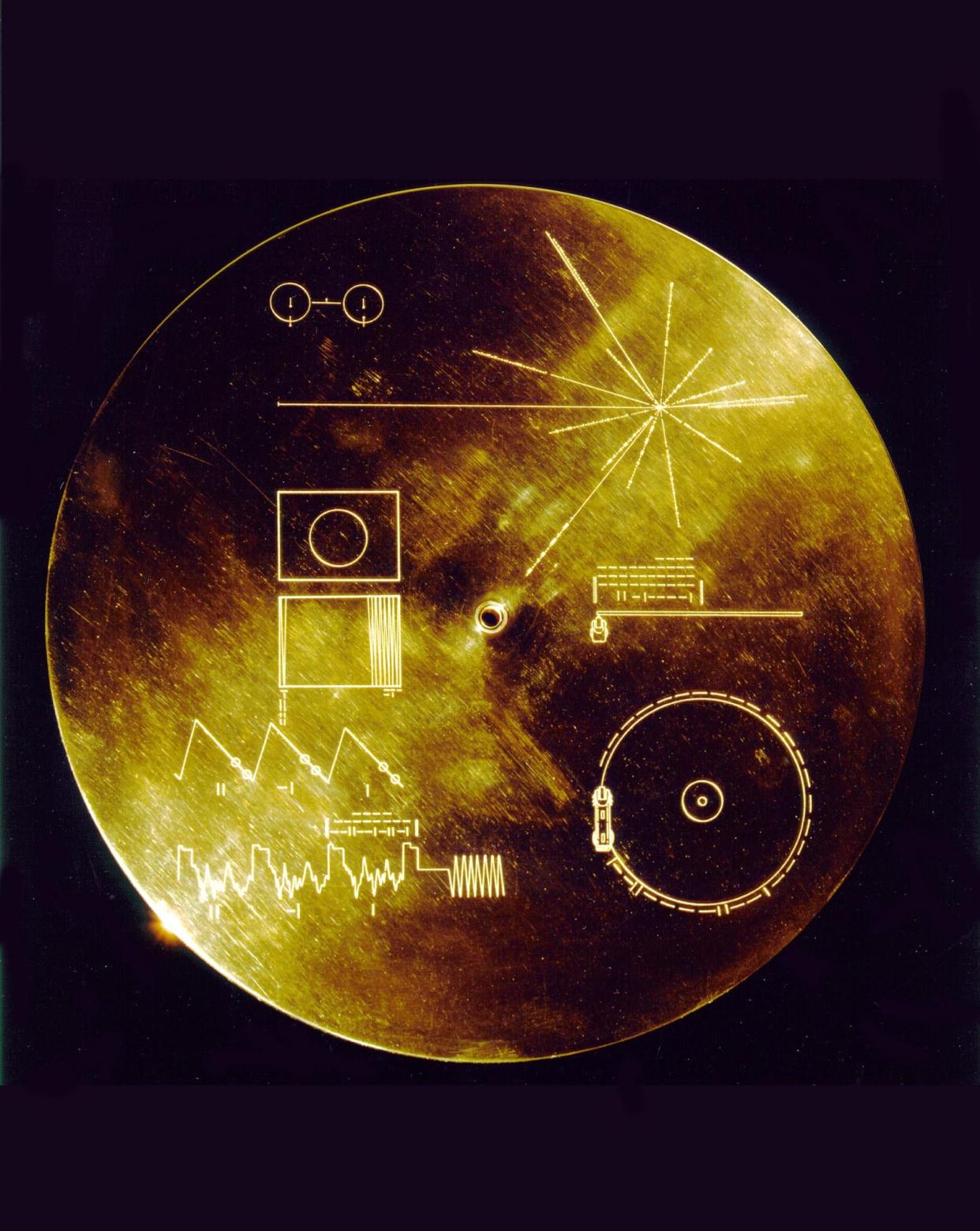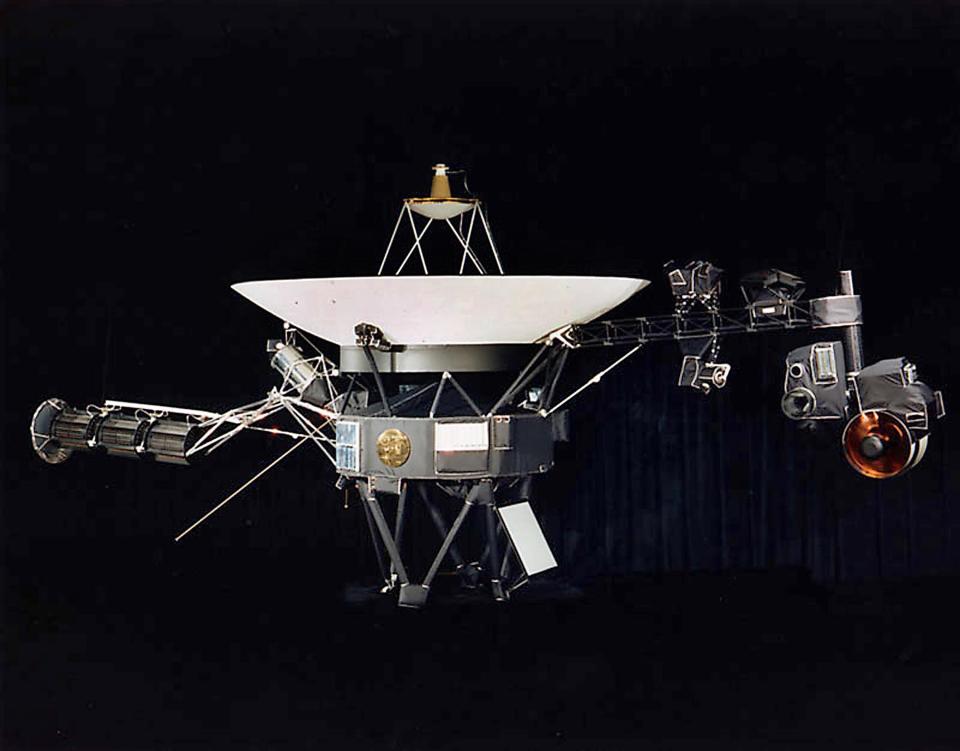Updating the 'message in a bottle' to aliens: Do we need a new Golden Record?

- Oops!Something went wrong.Please try again later.
If an extraterrestrial species were ever to intercept the famed Golden Record blasted off decades ago into space, they'd be introduced to timeless elements of humanity and our existence on Earth: Sounds of rain drops and erupting volcanoes; powerful images of not only our planet, but others in our solar system; greetings recorded in 55 languages across the world.
Yet both copies of the Golden Record – each launched in 1977 aboard NASA's two Voyager spacecrafts – also contain some contents that are starting to show their age.
Jimmy Carter's time in the Oval Office has long since come to an end, despite the message from the former president in the capsule. Meanwhile, plenty of music has been released since Chuck Berry recorded Johnny B. Goode in 1958.
The original Golden Record may be an invaluable time capsule floating through the vast cosmos like a message in a bottle for aliens to find, serving as a symbol of both our own presence and also of our desire to know others.
But some scientists think a 21st century upgrade is in order.
A team of researchers at NASA's Jet Propulsion Laboratory in Pasadena, California recently set out to lay the groundwork for what a new edition of the Golden Record may look like. Envisioned as future cargo aboard an uncrewed interstellar spacecraft, the message could be intercepted by another advanced civilization, where it would showcase "the full richness and depth of human life and experience," the team wrote.
The academic article was published Dec. 4 in AGU Earth and Space Science.
"Our goal is to share our collective knowledge, emotions, innovations, and aspirations in a way that provides a universal, yet contextually relevant, understanding of human society, the evolution of life on Earth, and our hopes and concerns for the future," the team wrote in the paper.
Geminid Meteor Shower: The best time to see the Geminid meteor shower is this week. Here's how to watch.
What is the mission of NASA's Voyager probes?

The twin Voyager probes were launched on separate dates in 1977 from Cape Canaveral, Florida and have since traveled billions of miles away from Earth.
In 2012, Voyager 1 became the first spacecraft to reach interstellar space, followed in 2018 by Voyager 2, according to NASA.
Voyager's main mission is to explore the far reaches of our solar system ‒ and beyond. To that end, the spacecrafts have investigated all the giant planets of our outer solar system ‒ Jupiter, Saturn, Uranus and Neptune ‒ as well as the planets' magnetic fields and a combined 48 of their moons, NASA says.
But both Voyager 1 and 2 also carry a greeting to any form of life they may encounter called the Golden Record.
None other than famed American astronomer Carl Sagan chaired the committee tasked with selecting the contents of the message, contained on a 12-inch gold-plated copper disk. The phonograph records contain aspects that encapsulate life on Earth, such as samples of music from different cultures and eras, natural and man-made sounds from Earth, and electronic information encoded in analog form that an advanced civilization could convert into photographs.
"These records not only offer a snapshot of Earth and human civilization," the researchers wrote in the December paper, "but also represent our desire to establish contact with advanced alien civilizations.
What could be included in the new 'message in a bottle?'
Now, those researchers are wondering: What might a new edition of the Golden Record contain?
The team didn't endeavor to make any specific suggestions themselves this early on, but they did outline a broad vision in their self-described "message in a bottle" project. The authors wrote that some of the original record's contents wouldn't need an drastic overhaul – just a slight update to reflect our modern times.
The new message – sharing our biology, culture, knowledge and accomplishments – might also include newer forms of media and technology, including videos, games and even computer code, the researchers said.
The odds that an extraterrestrial race would find the message are slim, and the chances they'd be able to decipher its meaning? Even slimmer, the researchers admit.
To give Earthlings the best hopes of communicating with these theoretical alien beings, the researchers proposed creating a two-part message: For less-advanced civilizations, a scroll containing simple images illustrating humanity and Earth; and for a more-advanced species, a minicomputer containing a larger amount of digital information.
'Celebrate and safeguard our shared human experience'
The team hopes their proposal is a catalyst to raise public interest in their aims and solicit participation from people across the globe.
Despite the recent hoopla about UFOs and extraterrestrials, conclusive proof of otherworldly life remains frustratingly elusive. Whether aliens exist is one question, but whether they are aware of our presence ‒ or even care ‒ is entirely another.
While making first contact with an advanced extraterrestrial species is a worthwhile goal, the researchers also wrote that simply preserving a trace of human civilization for years and decades to come is just as important.
The team proposed that one version of the finalized message be sent into deep space, while another remain archived here on Earth for humans and other intelligent lifeforms to find in the distant future.
"Our intention extends beyond just establishing contact with distant civilizations," the team wrote. "We also strive to inspire and unify current and future generations to celebrate and safeguard our shared human experience."
Eric Lagatta covers breaking and trending news for USA TODAY. Reach him at elagatta@gannett.com
This article originally appeared on USA TODAY: What should be on a new golden record to contact aliens?

